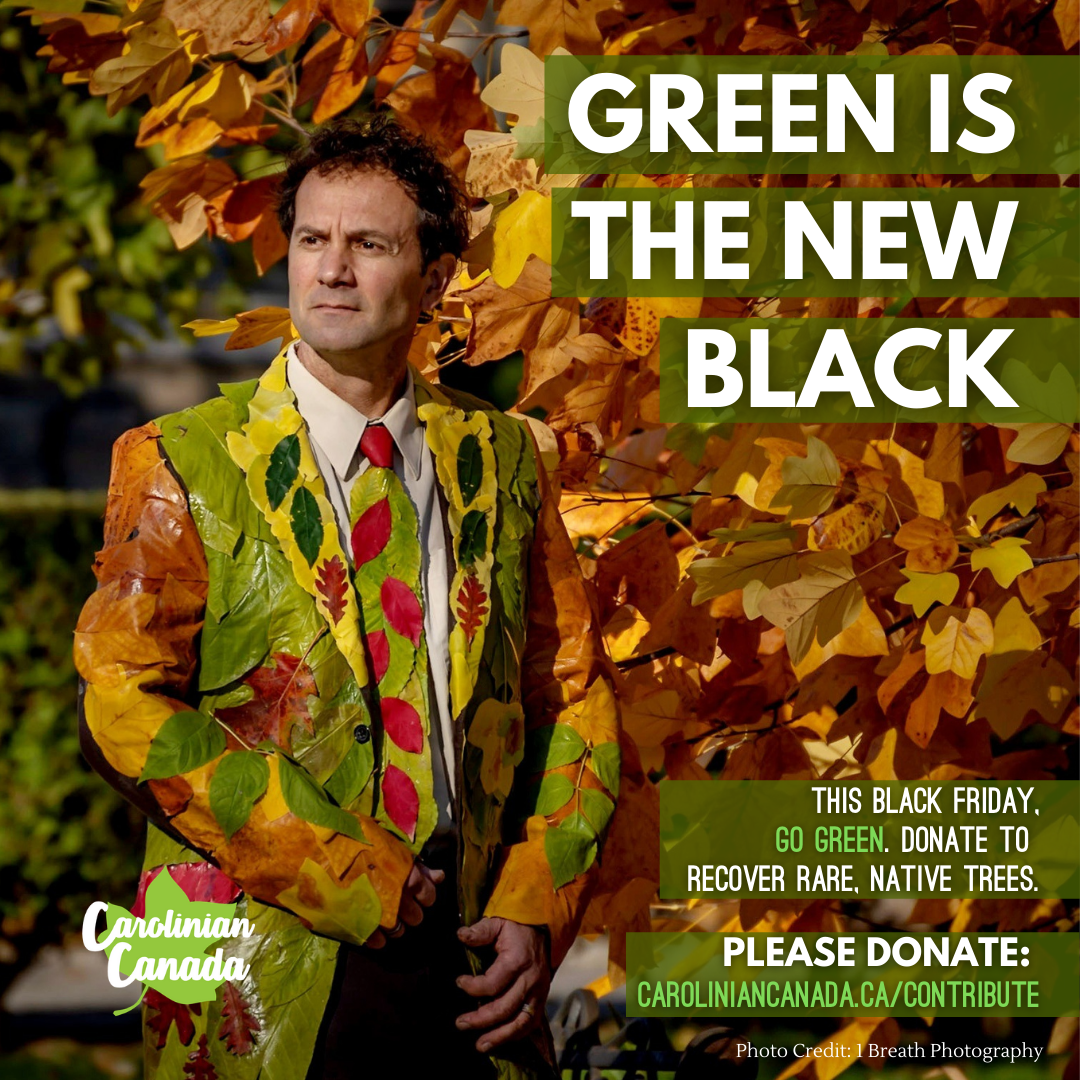For the benefit of those who don’t have regular conversations with plants, I came up with a new way of speaking for the trees.
Background
I’m a conservation biologist. It’s a part of my job to be concerned and serious about the declining natural world to get some action to protect and enhance nature. What if the alarm call wasn’t the usual deep concern and doomsday scenario, but a fun call to action? Here, I turn a new leaf…to see if we can shift just a fraction of the funds that we might be spending on Black Friday and Christmas, into allowing more native trees to flourish.
Why native? When we plant native trees, we are acting directly to dramatically help declining wildlife. We improve soil, which then holds more water, prevents flooding and erosion, and recovers the close to 90% of the landscape that has been destroyed. When we plant native trees, we bring back resilient habitat that nourishes food crops, wildlife, and air quality and we reclaim our natural heritage, bringing back a landscape teeming with beauty and wonder, as nature returns.
I know I’ll say it again, but, if you are able, it would tickle my suit pink if you could make any size of donation to help this amazing charity spread the love of trees, deeper into southern Ontario (https://caroliniancanada.ca/contribute) – it never hurts to ask.

The Idea Behind the Suit
Not long ago this fall, like many, I got inspired by the colours spawned by the momentous of beauty of fall. From green, photosynthesizing ‘solar panels’ in spring and summer to the eclectic eye-candy, the brilliant leaf-spread, turned my grey matter into a multicoloured array of inspiration.
That’s when I got it:
’Make a suit from leaves of rare native trees in need of a voice.’
So I did. Working with some of the rarest trees in Canada, including the Cucumber Magnolia, the Pawpaw and many others, the ensuing suit is a celebration of the few trees that remain and a call to help us repopulate these species in the most ‘suitable’ areas.
Since my yard is populated with hundreds of species of native plants, including 25 species of native trees, I was in good position to pick the perfect timing, selecting many rare species, including a full range of colours.
I organized the leaves based on size, colour, and species, spreading them out inside only when I was able to work with them right away. If they’re inside for too long, they dry up, curl, crack, lose their colour, and are tough to work with.
For $12.99 and $3.99 respectively I purchased a suit jacket and a tie from Value Village. One by one, I started gluing the fabric and applying the leaves in a manner that one would see feathers growing on a bird. Intuitively, the leaves really showed where they wanted to go on the fabric (like speaking to the tree!).
Jacket and Tie Leaf Stats
I then hired a friend, Tammy (1 Breath Photography), who charged very little to follow me through the streets of my village, in front of shops, on park benches, and under trees in the occasional picturesque courtyard. It was a blast. The outrageously colourful and loud suit opened some great conversations. After a few hundred shots were taken, we whittled down the options to 4 or 5 ‘good’ shots.
Then I got silent and silly under a tree and came up with a few of the sayings to go with the photos and here are a few:
“Green is the New Black Friday”
“Make Like a Tree and Leave the World a Better Place”
“If Trees Give Us Life, How About Giving Life Back to Trees?”

Remembering the Suit Is About the Trees
Many books are written on the fabulous lives and benefits of many of the trees that I used to create this cover the suit. In the context of southern Ontario, Cucumber Magnolia is a species of high priority for Canada; only 200 or so wild trees remain. We are in the middle of a project to help recover this species, and we need funds, properties, and much love to help made this tree common again.
Hugely important for First Nations, and a big part of this suit, is the Pawpaw Tree. It provides the largest fruit of any native tree in North America. The fruit is nothing short of dreamy. It is creamy, smooth, tasty, and ultra-healthy. At the moment, the Pawpaw is experiencing a renaissance, with many people helping in its recovery to a greater part of its former landscape (see this as an example) - https://caroliniancanada.ca/pawpaw).
Planting this tree will also possibly attract the rare butterfly, the gorgeous Zebra Swallowtail.
Most of the trees featured on this jacket are only found in the extreme southern part of Canada known as the Carolinian Zone. Coincidentally, the Tulip Tree, prominently featured on this jacket, is the largest native hardwood tree in North America and it is a part of the logo of the Carolinian Canada Coalition. This tree is also a key food source for the young of the Tiger Swallowtail Butterfly.
Extremely rare in Canada and appearing in their first fashion show via this suit are the Blue Ash (a blue dye can be extracted from this tree), the Cherry Birch, and the Pignut Hickory. Like the other native trees, the boost resilience of the forest – its ability to last and self-perpetuate for thousands of years, while providing so many side benefits to wildlife, humans, and a regulated climate.
Call to Action:
Please, research the other trees listed above as they have so much to offer and are also in need of our propagation, repatriation, and general support (give them a voice).
Donate: Here again is the link to contribute (if you are able): https://caroliniancanada.ca/contribute

* Gingko is the only non-native tree used on this jacket
